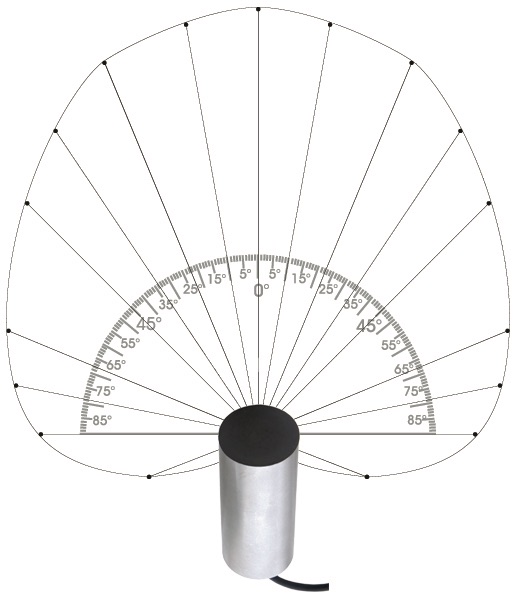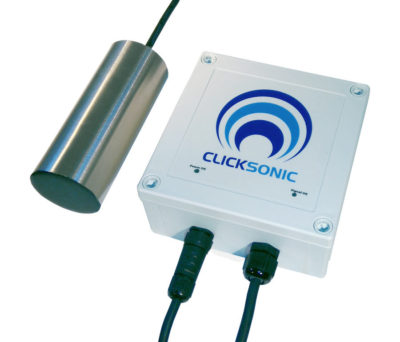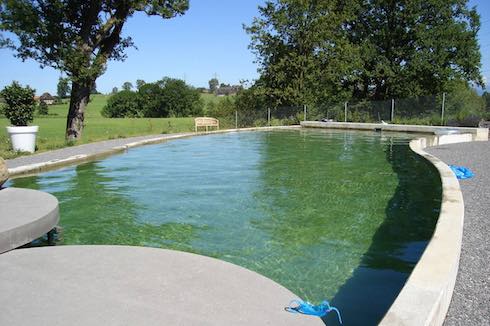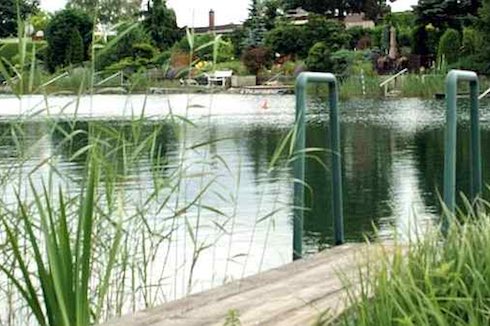The G-Sonic algae control device generates acoustic click tones and sends these signals to the click generator. The click generator is the loudspeaker under water, which emits the click tones as a complex sound wave pattern under water.

The clicks act on the vacuole of the algae, a microscopically small bubble, a cavity in the middle of the algae cell that refracts the light. The vacuole resonates until the membrane filled with cell sap cracks.
Green algae – Chlorophyta, Chlamydomonas, Spirogyra, Cladophora, Hydrodictyon, Volvox

- Existing green algae usually die within 2-3 weeks, depending on the type of algae; in the case of thread algae, this process can take up to 6-8 weeks.
Blue-green algae – Cyanobacteria

- Existing blue-green algae usually die within 1-3 weeks, depending on the type of algae.
With the click tones, all native algae species, such as green algae, thread algae, slime algae, brown algae, brush algae, beard algae and blue-green algae die due to natural stress.
Due to the methane gas present in the thread algae, the dead algae rise to the water surface where they can be sheared off. The dead thread algae can now be easily removed and the result is quickly visible. In a rain shower, the methane gas reacts and the dead algae sink to the bottom of the pond. All other algae species decompose into tiny particles of 1-2 microns and sink to the bottom.
The permanent use also prevents the formation of new algae.
Studies and experiments have shown that neither flora nor fauna are affected by the algae eliminator. The click tones are completely harmless to humans and animals, including fish. The desired aquatic plants thrive much better and the water becomes clearer.
Click tones and biofilm
The biofilm, algae film, mucus layer, coating, growth, mouldy skin or sewage skin is a thin mucus layer that is often found at the edges and at the bottom of ponds. Many microorganisms (e.g. bacteria, algae, fungi, protozoa) are stored in the biofilm. Due to the nutrients present in the biofilm or mucous layer, algae can multiply very strongly.
With the help of click sounds the biofilm is reduced by 50-75% as the algae growing on the biofilm do not exist anymore.
At the same time, by reducing the slimy layer pathogens and other bacteria have a much lower chance of survival, which makes the G-Sonic device ideal for swimming ponds.
Click tones and environment
The algae eliminators are environmentally friendly and free of chemicals. The sounds emitted by the device are not audible to humans and do not harm animals, fish or plants. This was confirmed by different universities (among other things university Gent) after long and detailed experiments at ponds (applies also to swimming ponds) and aquariums. Click sounds are produced in nature by many animal species, such as bats, dolphins and whales. Under water, humans hear the click sounds depending on their hearing ability.
Click sound propagation

The click tones are emitted by the click generator over a radius of 180°. The range depends on the model of G-Sonic algae free device. Placed at a favourable location at the edge of the water, the units can radiate sound to a semicircle with a radius of up to 150 metres, depending on the type, thus treating a water surface of up to 300 metres around the unit.
Position of the click generator
The click generator is placed in a favourable position at the edge of the water body in order to sound as large an area of water as possible. If you have a second external pond, it must also be equipped with an algae eliminator. The circuit must be closed, otherwise fresh algae will be added externally and the water object will be constantly “infected” with new algae.

Left: optimal position / Right: schadow zones
Click tones and safety
Security is a major concern. All algae free devices have galvanic separations with additional fine fuses. Only one loudspeaker signal is sent to the click generator, with the G-Sonic swimming pond (S) models max. 24 Volt. All algae free devices are CE compliant.















